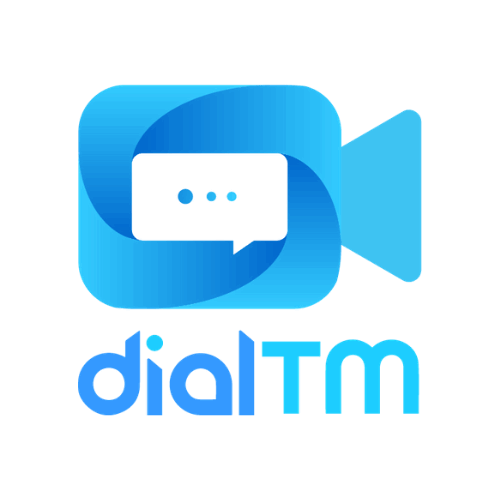What Is Team Communication Software?
Team communication software is a specialized application that helps teams communicate more efficiently and effectively. It enables team members to communicate, discuss, and share information in real time, regardless of location or time zone. This type of software addresses the unique requirements of modern enterprises, where teams are frequently dispersed across multiple geographical regions.
It creates a single platform for team members to communicate, reducing the need for lengthy email threads and back-and-forth phone calls. In addition to text-based conversations, team communication software supports video and voice calls, file sharing, task management, and interaction with other productivity tools. This comprehensive strategy ensures that all team communication and collaboration requirements are handled using a single platform.
One of the primary advantages of team communication software is the capacity to increase productivity. By providing a seamless and effective means for teams to communicate and collaborate, it removes the possibility of miscommunication and project delays. Furthermore, team communication software provides a clear and organized method for tracking progress and keeping everyone on the same page.
This is especially effective for remote teams or those with members from several departments since it fosters a sense of community and accountability. When considering purchasing team communication software, it is critical to analyze the features available, user-friendliness, and pricing options. Slack, Microsoft Teams, and Zoom are three popular solutions, each with their own distinct characteristics and target markets.
What Are The Recent Trends In Team Communication Software?
Team communication software has been a game changer in the corporate world, allowing teams to connect effortlessly while increasing overall efficiency. As technology and communication needs evolve, buyers must stay up to date on the latest trends in team communication software in order to make an informed purchase.
Here are some of the key trends driving the team communication software market.
1. Integration With Other Tools: In today's fast-paced corporate climate, teams employ a variety of tools to complete activities such as project management, document sharing, and video conferencing. The most current trend in team communication software is integration with these technologies to create a unified platform for all communication needs. This not only saves time, but also increases efficiency.
2. Mobile Communication: With the growth of remote and worldwide teams, mobile communication is more important than ever. Team communication software now provides mobile apps with all of the same functionality as the desktop version, allowing teams to stay connected and engage while on the road.
3. AI-Powered Features: Artificial intelligence (AI) is finding its way into team communication software, bringing advanced capabilities like automatic work assignment, smart search, and real-time language translation. These features not only save time, but also enhance accuracy and communication efficiency.
4. Security Emphasis: As teams work with sensitive information, secure communication becomes increasingly important. To address this issue, team communication software is emphasizing end-to-end encryption, data security, and compliance with industry requirements such as GDPR.
5. Video Conferencing And Virtual Meetings: With the advent of remote work, video conferencing and virtual meetings have become essential tools for team communication. Team communication software now has advanced video conferencing features such as screen sharing, recording, and virtual backdrops.
6. Improved Customization And Personalization: Buyers may now customize and configure their team communication software based on their individual requirements and preferences. This includes branding, color palettes, and integrations with other technologies that are compatible with their business operations.
What Are The Recent Trends In Team Communication Software?
Team communication software is an effective tool for streamlining and improving communication within a team. It combines texting, file sharing, task management, and video conferencing into a one platform, making it an indispensable tool for any business.
Let's explore, we'll look at the primary benefits of adopting team communication software, so you can make an informed decision about your team's communication needs.
1. Increased Collaboration And Productivity: One of the primary advantages of team communication software is increased collaboration and productivity. By consolidating all communication and project management onto a single platform, team members can simply remain connected, share ideas, and collaborate effortlessly. This removes the need for several tools and prevents miscommunication or duplication of work, resulting in greater production and efficiency.
2. Real-Time Communication: Team communication software provides real-time communication, allowing team members to keep in touch and respond quickly to pressing situations. With instant messaging and video conferencing options, team members can discuss and make choices more quickly, eliminating delays and ensuring task completion on time.
3. Increased Transparency And Accountability: Team communication software allows all team members to see the status of the project and their duties. This helps to encourage accountability among team members while preventing confusion or finger-pointing. It also enables team leaders and managers to monitor project progress in real time and respond quickly to any difficulties that arise.
4. Remote Team Management: In today's digital world, remote work is becoming more common. Team communication software is an effective tool for managing remote teams because it creates a virtual area where team members can stay connected, interact, and manage projects from anywhere in the world. This ensures that remote teams are on the same page and can collaborate efficiently, despite their physical distance.
5. Integration With Other Tools: Another feature of team communication software is its ability to interact with other tools and software that teams frequently use, such as project management tools, CRM systems, and file storage platforms. This reduces the need to switch between various programs and streamlines productivity, saving both time and effort.
Important Factors To Consider While Purchasing Team Communication Software?
When it comes to choosing team communication software, every buyer should examine a few key factors. After all, this form of software is required for team communication to run smoothly and effectively.
The following are the essential things to consider while analyzing and selecting team communication software.
1. Ease Of Use: The first factor to consider when selecting team communication software is its ease of use. This program should be simple and straightforward, allowing team members to explore and interact without requiring a significant learning curve. It should also provide a straightforward onboarding procedure for new team members.
2. Features And Functionality: The team communication software's features and functionality should be considered next. The program should have all of the tools required for effective team collaboration, including group chats, file sharing, task management, video conferencing, and more. It should also include adjustable features to meet your team's individual requirements.
3. Integration Capabilities: In today's digital world, team communication software should work seamlessly with the different products and platforms that your team employs. This enables a smooth flow of information and eliminates communication gaps. Check for integrations with your project management software, email clients, calendars, and other relevant applications.
4. Security And Privacy: Because team communication software frequently involves sensitive information and confidential discussions, security and privacy should be given first consideration. Look for software that has encryption, secure file storage, and other privacy features to safeguard your team's communication.
5. Scalability: When choosing team communication software, it is critical to consider your team's future growth. Will the program be capable of accommodating future team members and additional communication requirements? Make careful to select software that can scale as your team grows.
6. Mobile Accessibility: As remote work becomes more common, having team communication software that is available on mobile devices is essential. This enables team members to interact and work on the fly, increasing productivity and flexibility.
7. Cost: Finally, don't overlook the cost of team communication software. While investing in high-quality and comprehensive software is critical, you must also ensure that it is within your budget. Don't be scared to research pricing and features between suppliers to obtain the best deal for your company.
What Are The Key Features To Look For In Team Communication Software?
Team communication software is a vital tool for any organization that wants to improve communication and collaboration among its personnel. With so many alternatives on the market, it can be difficult to choose which features to prioritize when making a purchase decision.
Let's explore, we'll go over the most important aspects to consider while choosing team communication software.
1. Real-Time Messaging: One of the most important elements of team communication software is real-time messaging. It enables teammates to interact instantaneously, regardless of their location. Look for software that has a user-friendly and straightforward layout, as well as features like group chats and direct messaging to help you communicate efficiently.
2. File Sharing And Atorage: Another important feature to look for is the ability to share and collaborate on files within the software. This functionality eliminates the need for various tools and platforms, ensuring that all team members have access to the most recent versions of files. Look for software that includes a powerful file sharing and storage system, as well as an easy and safe method of storing and sharing documents.
3. Video And Audio Conferencing: As remote work becomes more common, having a team communication software that supports video and audio conferencing is essential. Look for software that includes high-quality video and audio, screen sharing, and virtual conference rooms to help you communicate and collaborate more effectively.
4. Task Management: Proper task management is critical to team productivity and project success. Look for software that includes a task management tool for assigning and tracking tasks, setting deadlines, and monitoring progress. Having all team members on the same page and aware of their duties is critical to attaining project objectives.
5. Integration And Compatibility: When selecting team communication software, make sure it interfaces with other products and platforms used by your firm. This will save time and boost efficiency by consolidating all communication and cooperation activities in one location.
6. Mobile Accessibility: In today's fast-paced workplace, having mobile-friendly team communication software is critical. Look for software that is accessible on both desktop and mobile devices, so that team members can stay connected and up to date when on the go.
7. Security And Privacy: When comparing team communication software, take note of the security and privacy aspects available. Look for software that has end-to-end encryption, two-factor authentication, and data backup, among other security features, to protect the confidentiality and safety of your team's chats and data.
By keeping these essential aspects in mind when assessing team communication software, you can choose a tool that meets your organization's goals while also encouraging efficient communication and collaboration among team members. Before purchasing, consider using free trials or demos to try the software and discover which one is best suited to your team.
Why Do Businesses Need Team Communication Software?
In today's fast-paced and worldwide business world, good team communication is critical to a company's success. However, traditional modes of communication, such as email and phone calls, are no longer sufficient to meet the expectations of modern business. This is where group communication software comes in.
Team communication software is a flexible and powerful solution that enables teams to cooperate and communicate in real time, regardless of location. It provides a unified platform for teams to share ideas, communicate updates, and manage projects, making it a valuable asset for enterprises of all kinds. One of the primary reasons why firms use team communication software is to increase productivity.
With capabilities such as instant chat, file sharing, and task management, team members can quickly collaborate and work seamlessly. This results in speedier decision making and more efficient project completion, eventually increasing productivity and saving crucial time. Furthermore, team communication software encourages transparency and accountability within the team. It allows managers to monitor project progress and ensure that everyone is on the same page.
This decreases the likelihood of miscommunication and fosters a more unified work atmosphere. Furthermore, team communication software enables firms to reduce communication expenditures. Instead of paying for pricey long-distance calls or in-person meetings, team members can interact via software, saving money. Another key advantage of team communication software is its compatibility with various tools and programs that businesses use on a daily basis. This connection streamlines processes and improves workflow, making it an invaluable resource for firms trying to optimise their operations.
How Much Time Is Required To Implement Team Communication Software?
The time necessary to adopt team communication software varies based on a number of factors, including the size of your team, the complexity of the program, and your organization's willingness to adapt. Implementing team communication tools can take anything from a few days to a few weeks. Before beginning the implementation phase, it is critical to have a sound plan in place.
This includes evaluating your organization's communication needs, finding the appropriate software to meet those goals, and ensuring your workforce is taught and on board with the future changes. The initial setup for team communication software may include tasks such as creating user accounts, configuring channels and groups, and connecting the program with other technologies that your team may be utilizing.
This process can usually be finished in a few hours to a day, depending on the software's complexity. Next, training your team on how to use the program efficiently is critical to a successful installation. This can take anywhere from a few days to a week, depending on how complex the software is and how much training is required. Finally, the true test of implementation is your team's adoption and integration of the program into their everyday workflow. This may take many weeks while your staff adjusts to and grows familiar with the new communication platform.
What Is The Level Of Customization Available In Team Communication Software?
Team communication software provides variable levels of customisation to meet the specific demands of each team. From changing the color palette to adding unique features, the extent of customisation possible is determined by the software you use. Most team communication software allows users to modify their profile by uploading a profile photo, status, and contact information.
This allows team members to personalize their presence while also making it easier for team leaders to recognize and communicate with them. In addition to customisation, many team communication software allows you to alter the whole interface. This could include reorganizing the layout, adding or removing features, and altering the color palette and branding to reflect your team's identity.
This level of personalization not only results in a more visually appealing interface, but it also enables teams to provide a more bespoke and personalized experience to their members. Some team communication software also allows for significant customization, such as the creation of custom workflows, task automation, and integration with other team tools and software.
These capabilities enable a more smooth and efficient working environment by allowing the software to be tailored to the team's individual needs and practices. It's crucial to note that the level of customisation offered may vary depending on the pricing plan you select. Most software packages include more advanced customization possibilities with their premium or enterprise plans, whereas basic plans may have less customization options.
As a result, before deciding on a team communication software, you should consider the level of flexibility it provides and if it matches your team's specific requirements. Customization may significantly increase the software's functionality and efficiency, making it an attractive investment for organizations wishing to optimize their communication and collaboration processes.
Which Industries Can Benefit The Most From Team Communication Software?
Team communication software is an invaluable tool for almost any sector since it improves collaboration, efficiency, and production among team members. However, some sectors might greatly benefit from adopting team communication software into their regular operations.
Let's explore, we'll look at which sectors stand to benefit the most from team communication software and how it may improve their productivity.
1. IT & Software Development: In the fast changing world of technology and software development, efficient communication is critical to the success of every project. Team communication software offers a centralized platform for developers, designers, and project managers to work together, share updates, and discuss ideas in real time. It also includes capabilities like file sharing, task management, and interfaces with project management applications, making it an indispensable tool for streamlining development processes.
2. Marketing & Advertising: Effective communication among team members is critical in the marketing and advertising sector for successful campaign ideation, planning, and execution. Marketers and advertisers can use team communication tools to easily communicate ideas, discuss tactics, and cooperate on projects, regardless of their location. It also includes useful features like analytics, campaign tracking, and consumer feedback, making it a must-have tool for marketing and advertising professionals.
3. Healthcare: Effective communication among healthcare workers can mean the difference between life and death. Doctors, nurses, and other healthcare professionals can use team communication software to instantly interact with one another to discuss patient care, share medical information, and provide updates. This results in better patient outcomes, enhanced efficiency, and improved collaboration among all teams.
4. Education: With an increasing number of students opting for remote learning, team communication software has become a vital tool in the education business. It allows professors and students to connect and work effortlessly, regardless of their geographical location. It also provides virtual classrooms, file sharing, and interactive capabilities, making it an excellent platform for remote learning.
5. Nonprofit Organizations: Non-profit organizations frequently have teams and volunteers working remotely, making excellent communication critical to their success. Team communication software offers a safe and centralized platform for collaboration, allowing teams to stay connected and work toward a single goal. It also includes features such as task management, event planning, and volunteer organizing, which can be quite useful for non-profit groups.
Conclusion
In conclusion, selecting the appropriate team communication software is critical for any firm. It can significantly improve team cooperation, production, and overall communication within the organisation. When looking for a good choice, consider the team's size, communication requirements, budget, and security features. According to our analysis, the top team communication software on the market are Slack, Microsoft Teams, Zoom, and Google Meet.
Each of them offers distinct features, pricing plans, and integrations, allowing purchasers to choose the best fit for their team. In addition, important stakeholders, such as team members and IT professionals, must be involved in the decision-making process to ensure that the program satisfies the demands of all users. It is also advisable to choose software that offers a free trial period so that you may try its capabilities and assess whether it is compatible with your team's communication styles.
To conclude, purchasing team communication software necessitates much research and analysis in order to make an informed decision. Businesses that use the proper tools can improve team collaboration and ultimately drive success. We hope this buyer's guide has given you useful information to help you make the right option for your team's communication needs.






















